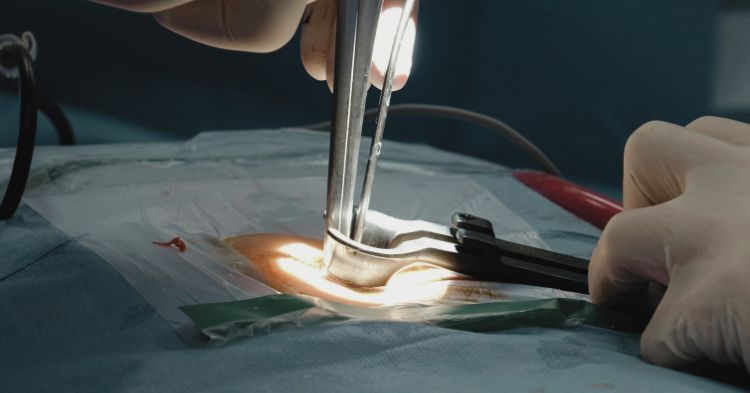Minimally Invasive vs Open Spine Surgery in London: Which Is Right for You?
Living with persistent back or neck pain can be life-changing. When conservative treatments like physiotherapy, spinal injections, or medication are no longer effective, surgery may become necessary. For many patients at London Spine Health, one of the biggest questions is whether minimally invasive spine surgery (MISS) or traditional open spine surgery is the right option.
Both surgical approaches aim to relieve pain, restore mobility, and improve quality of life, but they differ significantly in terms of technique, recovery, and patient suitability. Understanding these differences can help you make an informed decision with your surgeon.
What Is Open Spine Surgery?

Open spine surgery has been the traditional approach for decades. In this method, the surgeon makes a larger incision in the back to access the spine directly. Muscles and tissues are carefully moved aside to provide a clear view of the vertebrae, discs, or nerves requiring treatment.
It is often required in complex cases such as severe spinal deformities, multi-level disc disease, extensive spinal instability, or revision surgeries. The main advantage is that it gives surgeons excellent visibility and access. However, patients usually face longer hospital stays, greater blood loss, and slower recovery compared to minimally invasive procedures.
What Is Minimally Invasive Spine Surgery (MISS)?

Minimally invasive spine surgery uses small incisions as little as one or two centimetres wide along with advanced imaging and specialised tools. Instead of cutting through muscles, the surgeon gently separates them which minimises disruption to surrounding tissues.
MISS is especially effective for targeted conditions such as herniated discs, sciatica, spinal stenosis, or single-level spinal fusions. Because the approach causes less trauma, patients often recover faster, experience less postoperative pain, and go home with much smaller scars.
Key Differences Between the Two Approaches
| Factor | Open Spine Surgery | Minimally Invasive Spine Surgery (MISS) |
|---|---|---|
| Incision size | 5–8 inches | 1–2 cm |
| Muscle disruption | More extensive | Minimal |
| Blood loss | Higher | Lower |
| Hospital stay | 3–5 days | Same day or 1–2 days |
| Recovery time | Weeks to months | Days to weeks |
| Scarring | Larger | Smaller |
| Best for | Complex, multi-level conditions | Targeted, single-level conditions |
Why Patients Choose Minimally Invasive Surgery

Patients in London often prefer minimally invasive techniques because the recovery feels smoother and less daunting. Smaller incisions usually mean less pain, reduced risk of infection, and quicker returns to work and daily life. In some cases, the surgery can even be performed as a same-day outpatient procedure.
Another benefit is the cosmetic result. Scars are far smaller and heal more discreetly. For many patients, the combination of medical and lifestyle advantages makes MISS an appealing choice whenever it is suitable.
When Open Surgery Remains Essential
Despite the many advantages of minimally invasive techniques, open surgery still plays a crucial role. Complex spinal deformities such as scoliosis, multi-level disc disease, and revision procedures often cannot be managed through smaller incisions. In these situations, open surgery provides the visibility and access surgeons need to achieve the safest and most effective outcomes.
Making the Right Choice
The decision between open and minimally invasive spine surgery depends on many factors. Your diagnosis, the severity and location of the problem, and your overall health will all play a role. Just as importantly, it depends on the surgeon’s expertise in both techniques.
At London Spine Health, we take the time to discuss your imaging results with you, explain your treatment options clearly, and recommend the path most likely to bring long-term relief.
Robotic-Assisted Surgery in London
Another advancement available in London is robotic-assisted spine surgery. Robotics improve precision in implant placement and navigation which reduces the risks associated with surgery and further supports quicker recoveries. Whether performed minimally invasively or as an open procedure, robotic assistance represents the future of spine surgery.
Final Thoughts
Both minimally invasive and open spine surgery have their place in modern treatment. Open surgery remains vital for complex and multi-level spinal problems, while minimally invasive techniques are transforming the recovery experience for many patients across London.
If you are living with persistent back or neck pain, consulting a spine specialist is the best way forward. At London Spine Health, we provide same-day consultations and imaging, personalised surgical plans, and expertise in both approaches including robotic-assisted options.
Your journey to recovery begins with the right decision, and we are here to guide you every step of the way.
